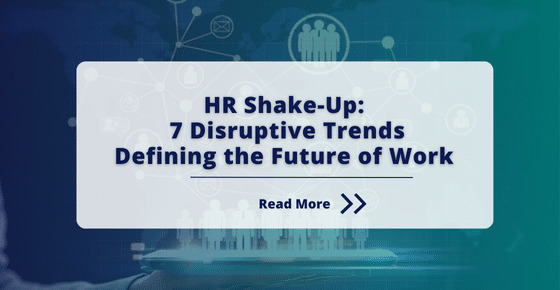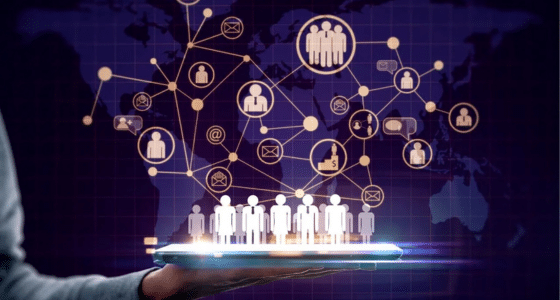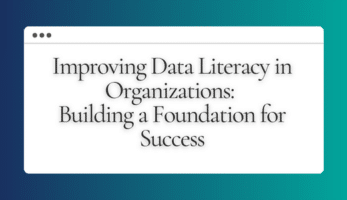Equity and Inclusion, HR Outsourcing, HRIS, Human Resources, Leadership
HR Shake-Up: 7 Disruptive Trends Defining the Future of Work

The definition and responsibilities of Human Resources is continually evolving, influenced by technological advancements, demographic shifts, and changing societal expectations. As organizations strive to adapt, several prominent trends have emerged, reshaping the way we approach human capital management.
#1 – Integration of Artificial Intelligence in HR Processes
Artificial Intelligence (AI) is revolutionizing HR functions, from recruitment to performance management. AI-powered tools enable data-driven decision-making, streamline administrative tasks, and enhance employee experiences. For instance, AI can automate resume screening, predict employee turnover, and personalize learning and development programs. This integration not only improves efficiency but also supports strategic HR initiatives by providing deeper insights into workforce dynamics. However, successful implementation requires a thoughtful approach. Here’s how organizations can maximize AI’s potential in HR:
- Understand the Potential of AI in HR
- Start Small: Identify Key Areas for AI Integration
- Choose the Right AI Tools
- Train Your Team
- Monitor and Evaluate
- Ensure Ethical Use of AI (have policies and keep updating them)
Integrating AI into HR practices can lead to significant improvements in efficiency and effectiveness. By starting small, choosing the right tools, and investing in team training, HR professionals can harness the power of AI to enhance their operations and drive better outcomes for their organizations.
More info: Embracing AI: A Beginner’s Guide for HR Professionals | Webinar: The Culture of AI | Podcast: The AI Whisperer
#2 – Managing a Multigenerational Workforce
Today’s workplace spans a broader age range than ever, from Baby Boomers nearing retirement to Generation Z stepping into leadership—and even the emerging Generation Alpha beginning internships and early career experiences. With employees ranging from 16 to 80, organizations must navigate varying work styles, communication preferences, and career expectations to foster a productive and inclusive environment.
- Bridge the Communication Gap – create flexible and multi-channel communication strategies
- Activate Mentorship – including reverse mentorship (younger employees coach senior colleagues on emerging tech, digital tools, and modern workplace trends)
- Proactively upskill – career pathing, technical and soft skills training, leadership readiness program
Embracing generational diversity isn’t just about accommodation—it’s about leveraging each generation’s strengths to drive innovation and long-term business success.
Read more from our blogs: Navigating Growth and Succession in a Multigenerational Workforce | The Great Retirement – How to Start Up-Skilling and Growing Your Workforce | What Gen Z Wants in the Workplace
#3 – Reevaluating Performance Management Systems
As organizations navigate a rapidly evolving business landscape, they are reassessing how they evaluate and develop talent. Companies like Microsoft have transitioned to more structured, transparent performance evaluation systems that emphasize clear expectations, accountability, and continuous development. Rather than vague or subjective assessments, modern performance management focuses on:
- Equitable Career Pathing – ensuring employees at all levels have access to advancement opportunities
- Skill-based Development – providing clear learning and upskilling programs to prepare employees for leadership and specialized roles
- Continuous Feedback Loops – replacing outdated annual reviews with ongoing, meaningful conversations about growth and performance
By prioritizing fair and transparent evaluation methods, companies can create a workplace where employees understand how to grow within the organization and feel empowered to take charge of their careers.
More info: Key Performance Indicators for Managers | The Middle Manager Dilemma: Breaking Barriers to Success | Webinar: 5 Steps to Redesigning Performance Management | Webinar: Next Gen Performance Management: Productive Relationships and Constructive Conversations
#4 – The Leadership Gap
As organizations struggle with labor shortages and skills gaps, one issue looms larger than most: the lack of true leadership development. Many companies promote employees into leadership roles based on tenure or technical skills—without equipping them with the coaching, strategic thinking, and people management skills they need to succeed. This results in disengaged teams, high turnover, and ineffective leadership at all levels. To close this gap, companies must move beyond traditional training and invest in structured leadership development programs that provide:
- Personalized Coaching – One-on-one and group coaching to build confidence, decision-making skills, and leadership presence
- Real-World Leadership Training – Hands-on learning, simulations, and mentorship programs that develop leaders in action, not just theory
- Clear Career Progression Paths – Transparent leadership pipelines that help employees understand how to grow into management roles
- Soft Skills Development – Training in communication, emotional intelligence, and conflict resolution—key skills many new leaders lack
Without intentional coaching and leadership training, companies risk losing top talent and struggling to fill critical roles. The future of work depends on organizations actively developing their next generation of leaders—before the leadership gap widens even further. And it’s what the younger generations are asking for—development opportunities.
More info: Unlocking Leadership Excellence: The Power of External Coaches | Accountability: Will You Own the Good and the Bad? | Podcast: To Coach or Not To Coach
#5 – Balancing Remote and On-Site Work
The debate between remote and in-office work continues as companies seek the optimal balance to maintain productivity and employee satisfaction. Some organizations are advocating a return to the office, while others recognize the benefits of flexible work arrangements. Finding this balance is crucial for attracting and retaining talent in a competitive market, as flexibility has become a key consideration for many employees. Here are some recommendations for companies handling a return to the office:
- Assess the Team(s)
- Evaluate a Hybrid Option
- Offer Flexible Scheduling
- Communicate Transparently
- Support Employee Well-Being
- Reimagine Office Space
- Foster a Culture of Inclusivity
- Invest in Training & Development
- Monitor and Adjust
- Leverage Technology
Read more from our blogs: Navigating the Path Forward: The Status of Returning to the Office | 8 Ways to Prevent Employee Burnout
#6 – Enhancing Employee Experience through Technology
The adoption of HRIS (Human Resource Information Systems) is transforming how HR services are delivered. These platforms facilitate efficient management of employee information, streamline recruitment processes, and support virtual training and development. By leveraging technology, organizations can provide a more engaging and responsive employee experience, which is essential for retention and satisfaction. Here’s how organizations can enhance their data literacy to fully leverage their HR systems and drive meaningful results for the entire organization:
- Define the Purpose of Each System or Technology
- Clarify Expectations for Each User Role
- Underscore the Importance of Data Integrity and the Impact
- Reinforce That Data Integrity Drives Value
Everyone has a role in maintaining data integrity. When each individual takes ownership of their “puzzle pieces,” the organization can unlock the full potential of its systems, driving value and achieving its goals.
Read more here: Improving Data Literacy in Organizations: Building a Foundation for Success | Vlog: Ask the Expert – Human Resources Information Systems (HRIS)
#7 – Promoting Diversity, Equity, Inclusion, and Belonging (DEIB)
Companies with high levels of diversity, equality, inclusion, and belonging (DEIB) are linked to increased productivity, performance, and creativity, leading to improved employee retention and wellbeing. The benefits of building a diverse group of team members are exponential.
- Revamp Your Company Vision and Goals
- Redefine Your Hiring Strategy
- Practice Empathetic Leadership
- Create a Safe Space for Employees
- Encourage Inclusive Behaviors
- Value Your Employees
More info: Blog: How to Build a Diverse Team | Webinar: Inclusive Communication & Gender Pronouns- Why They Matter | Webinar: Thinking Differently about Neurodiversity in the Workplace | Podcast: The Journey to DEIB | Podcast: Doing Better: Driving Equity in the Workplace
Staying abreast of these HR trends is vital for organizations aiming to thrive in today’s dynamic environment. By embracing technological innovations, valuing generational diversity, refining performance management, addressing leadership challenges, balancing work arrangements, enhancing employee experiences, and promoting genuine inclusivity, businesses can build resilient and forward-thinking workplaces.
Exude Human Capital is not your typical consulting firm. We provide dynamic solutions in HR outsourcing, compensation strategies, strategic advisory, organizational and cultural assessments, DEIB advisory and training, coaching, and leadership development programs.
At Exude, we understand that people are the cornerstone of every successful organization. We’re dedicated to helping organizations—big, small, and everything in between—lift up their people, their mission, and their bottom line. Our equitable perspectives create an environment where teams can truly shine and grow, and individuals feel a deep sense of belonging. Our diverse team of talented consultants is committed to delivering impactful, tailored strategies that align with your goals and values.
Reach out to us and let’s partner together on your people strategies!









